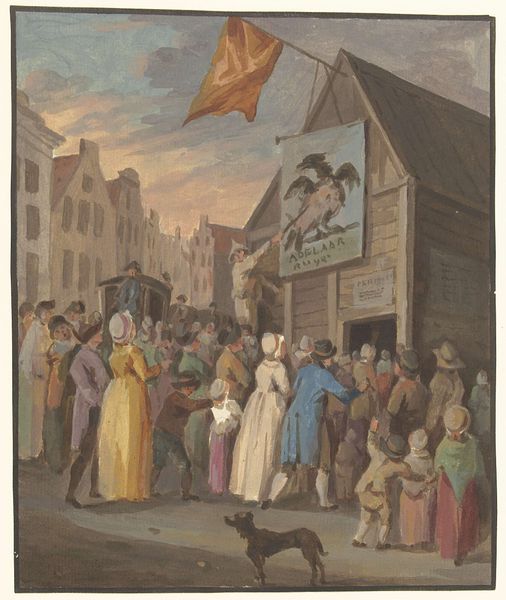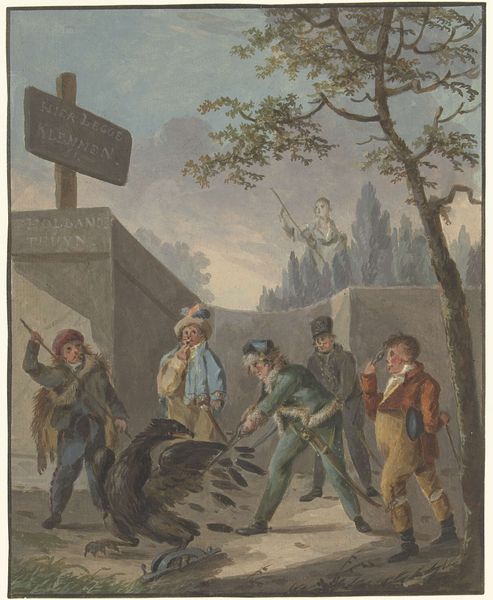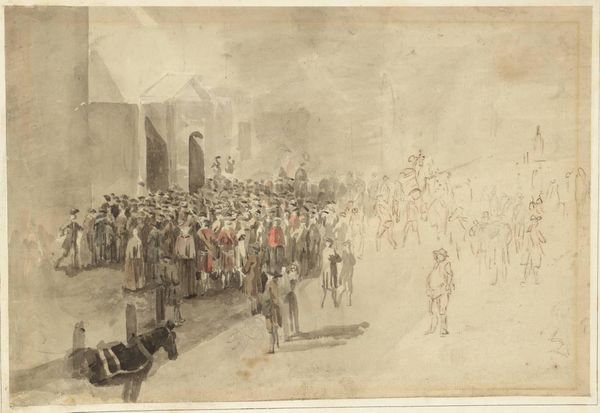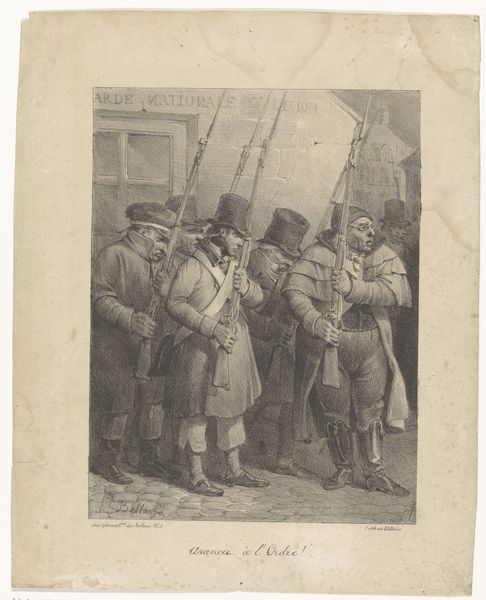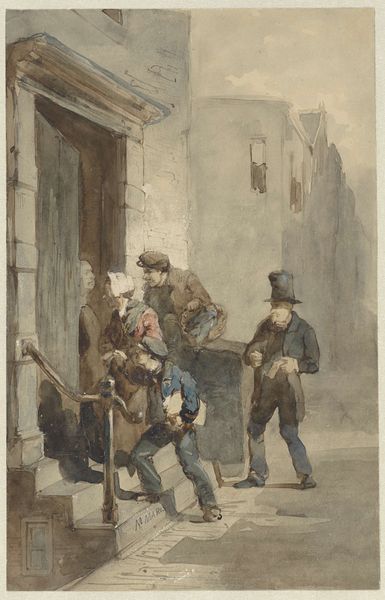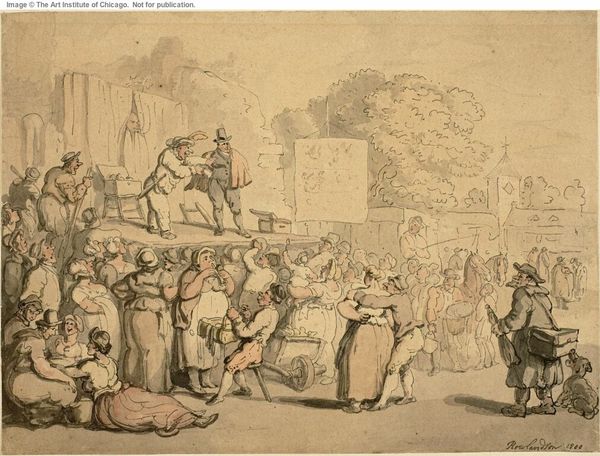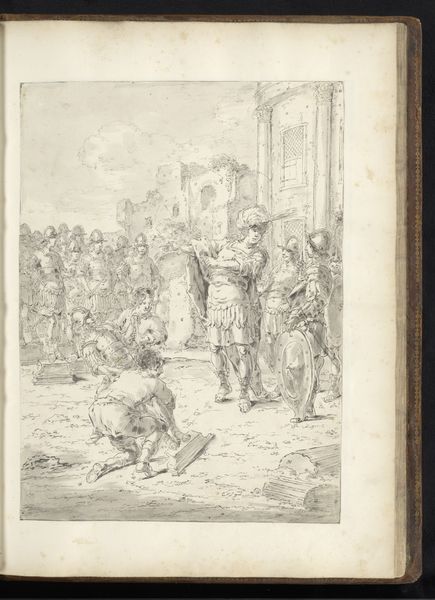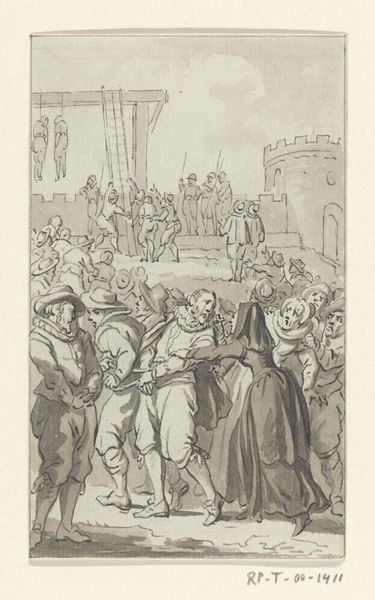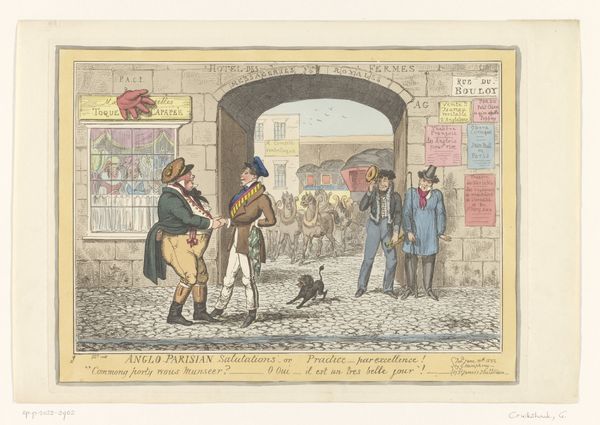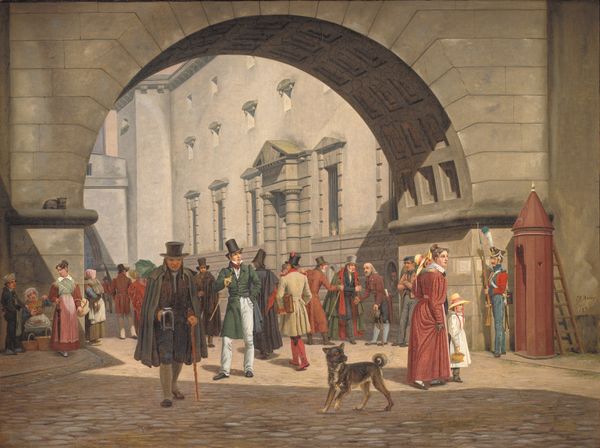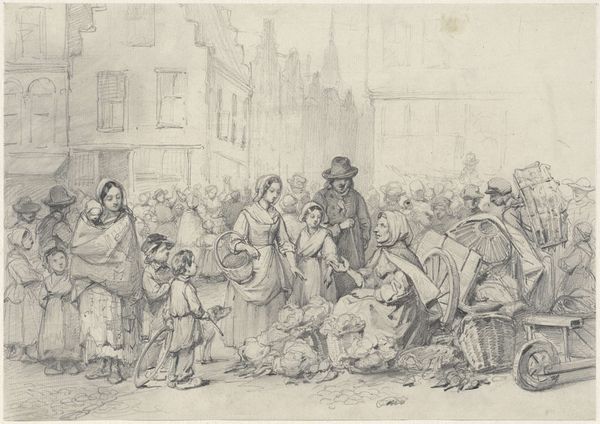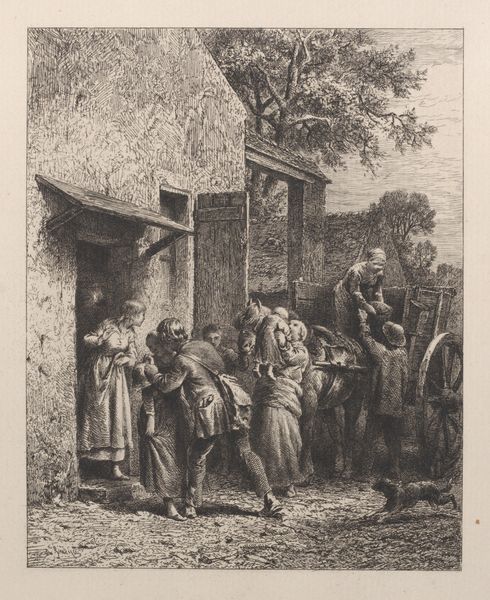
painting, watercolor
#
painting
#
oil painting
#
watercolor
#
romanticism
#
cityscape
#
watercolour illustration
#
genre-painting
#
street
Dimensions: height 226 mm, width 187 mm
Copyright: Rijks Museum: Open Domain
Editor: Here we have a watercolor painting titled "De eerste Cossakken binnen Amsterdam," or "The First Cossacks inside Amsterdam," painted in 1813 by an anonymous artist. I'm struck by how chaotic the scene feels, yet also how the muted color palette creates a sense of distance, like we are observing a historical document. What jumps out at you? Curator: Indeed. Note how the artist employs a high vantage point, compressing the pictorial space. This vantage is crucial in understanding the arrangement of figures within the urban environment. How does this composition guide your eye through the scene? Editor: My eye is drawn to the red-coated figure in the center – it is the only one in a distinctly different color. Then I move around the crowd. Curator: Precisely. Consider the placement of that figure within the visual field. Observe also the textural contrasts – the fluidity of the watercolor medium itself versus the implied textures of clothing and building materials. How do these contrasts contribute to the work's meaning? Editor: I suppose the crisp red, and the contrast help it stand out, marking it important amongst the somewhat monochrome browns and creams of everyone else. Is there anything important in terms of form to be found within the figures or animals? Curator: Look at the posture of the cossacks on horseback and other characters, versus that of the central figure with red coat. Their rigidity could symbolize a specific form of governance or structure about to happen within Amsterdam itself, using line and position alone. The dog seated and gazing outwards and the figures seemingly embracing, may tell their own narrative that counterbalances power through colour and geometry. Editor: That's fascinating. I never considered how the lines could depict a power dynamic. It shows you how much intention there is in an image, that could otherwise be passed as simple snapshot in time. Curator: Indeed, considering these elements is how we can further understand art as a dialogue in materials and construction alone, as well as history and intent.
Comments
No comments
Be the first to comment and join the conversation on the ultimate creative platform.
